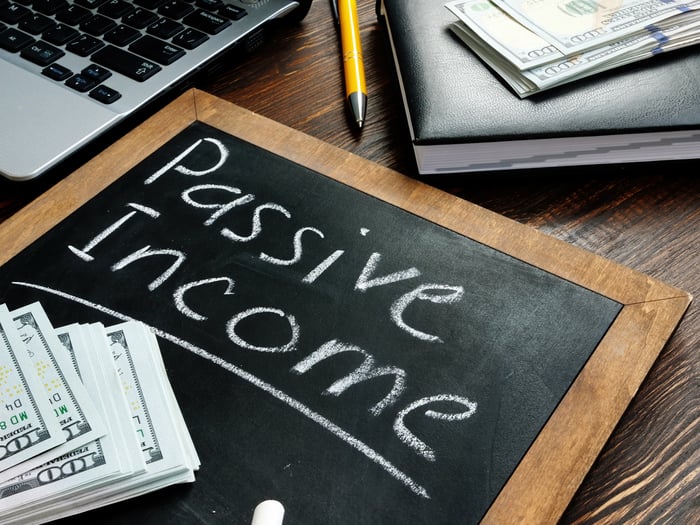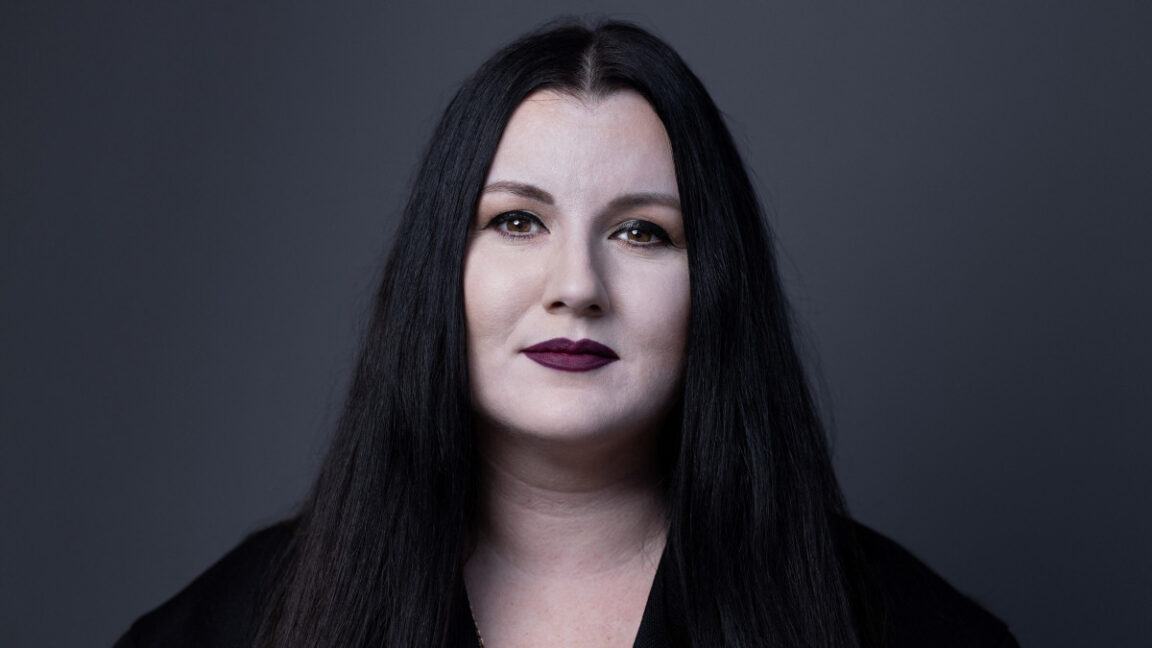Reading view
How to actually raise a seed round: Actionable advice from top investors at TechCrunch Disrupt 2025
Belkin ends support for most Wemo devices and its Wemo app
5 days until TechCrunch All Stage — save up to $475 before prices rise
Teenagers can now hail a Waymo robotaxi in Phoenix
Thank you to the visionaries: Celebrating the partners behind TechCrunch All Stage
Wonder Dynamics co-founder Nikola Todorovic joins the AI Stage at TechCrunch Disrupt 2025
Better Dividend ETF to Buy for Passive Income: SCHD or GCOW
Key Points
SCHD and GCOW focus on higher-yielding dividend stocks.
The ETFs have different strategies for selecting those stocks.
They also have different fees and return profiles.
Many exchange-traded funds (ETFs) focus on holding dividend-paying stocks. While that gives income-seeking investors lots of options, it can make it difficult to know which is the best one to buy.
The Schwab U.S. Dividend Equity ETF (NYSEMKT: SCHD) and Pacer Global Cash Cows Dividend ETF (NYSEMKT: GCOW) are two notable dividend ETFs. Here's a look at which is the better one to buy for those seeking to generate passive income.
Where to invest $1,000 right now? Our analyst team just revealed what they believe are the 10 best stocks to buy right now. Learn More »

Image source: Getty Images.
Different strategies for selecting high-yielding dividend stocks
The Schwab U.S. Dividend Equity ETF and the Pacer Global Cash Cows Dividend ETF aim to provide their investors with above-average dividend income by holding higher-yielding dividend stocks. The ETFs each hold roughly 100 dividend stocks. However, they use different strategies to select their holdings.
The Schwab U.S. Dividend Equity ETF aims to track the returns of the Dow Jones U.S. Dividend 100 Index. That index screens U.S. dividend stocks based on four quality characteristics:
- Cash flow to debt.
- Return on equity (ROE).
- Indicated dividend yield.
- Five-year dividend growth rate.
The index selects companies that have stronger financial profiles than their peers. That should enable them to deliver sustainable and growing dividends, and the Schwab U.S. Dividend ETF accordingly provides investors with a higher-yielding current dividend that should grow at an above-average rate. At its annual reconstitution, its 100 holdings had an average dividend yield of 3.8% and a five-year dividend growth rate of 8.4%.
The Pacer Global Cash Cows Dividend ETF uses a different strategy for selecting its 100 high-yielding dividend stocks. It starts by screening the 1,000 stocks in the FTSE Developed Large-Cap Index for the 300 companies with the highest free cash flow yield over the past 12 months. It screens those stocks for the 100 highest dividend yields. It then weights those 100 companies in the fund from highest yield to lowest, capping its top holding at 2%. At its last rebalance, which it does twice a year, its 100 holdings had an average free cash flow yield of 6.3% and a dividend yield of 5%.
Here's a look at how the top holdings of these ETFs currently compare:
|
SCHD |
GCOW |
|---|---|
|
ConocoPhillips, 4.4% |
Phillip Morris, 2.6% |
|
Cisco Systems, 4.3% |
Engie, 2.6% |
|
Texas Instruments, 4.2% |
British American Tobacco, 2.4% |
|
Altria Group, 4.2% |
Equinor, 2.2% |
|
Coca-Cola, 4.1% |
Gilead Sciences, 2.2% |
|
Chevron, 4.1% |
Nestle, 2.2% |
|
Lockheed Martin, 4.1% |
AT&T, 2.2% |
|
Verizon, 4.1% |
Novartis, 2.1% |
|
Amgen, 3.8% |
Shell, 2.1% |
|
Home Depot, 3.8% |
BP, 2% |
Data sources: Schwab and Pacer.
Given their different strategies for selecting dividend stocks, the funds have very different holdings. SCHD holds only companies with headquarters in the U.S., while GCOW takes a global approach. U.S. stocks make up less than 25% of its holdings. Meanwhile, SCHD weights its holdings based on their dividend quality, while GCOW weights them based on dividend yield. Given its focus on yield, GCOW offers investors a higher current income yield at 4.2%, compared with 3.9% for SCHD.
Costs and returns
While SCHD and GCOW focus on higher-yielding dividend stocks, their strategies in selecting holdings have a major impact beyond the current dividend income. Because SCHD is a passively managed ETF while GCOW is an actively managed fund, SCHD has a much lower ETF expense ratio than GCOW. SCHD's is just 0.06%, compared with GCOW's 0.6%. Put another way, every $10,000 invested would incur $60 in management fees each year if invested in GCOW, compared with only $6 in SCHD.
GCOW's higher fee really eats into the income the fund generates, which affects its returns over the long term. The fund's current holdings actually have a 4.7% dividend yield, whereas the fund's latest payout had only a 4.2% implied yield.
|
ETF |
1-Year |
3-Year |
5-Year |
10-Year |
Since Inception |
|---|---|---|---|---|---|
|
GCOW |
11.2% |
8.4% |
15.5% |
N/A |
8.8% |
|
SCHD |
3.8% |
3.7% |
12.2% |
10.6% |
12.2% |
Data sources: Pacer and Schwab. Note: GCOW's inception date is 2/22/16, while SCHD's is 10/20/11.
GCOW has outperformed SCHD over the past five years. However, SCHD has delivered better performance over the longer term. That's due to its lower costs and focus on companies that grow their dividends, which tend to produce the highest total returns over the long term.
SCHD is a better ETF for passive income
SCHD and GCOW hold higher-yielding dividend stocks, making either ETF ideal for those seeking passive income. However, SCHD stands out as the better one to buy because of its focus on dividend sustainability and growth. It also has a much lower ETF expense ratio. So it should provide investors with an attractive and growing stream of passive dividend income.
Should you invest $1,000 in Schwab U.S. Dividend Equity ETF right now?
Before you buy stock in Schwab U.S. Dividend Equity ETF, consider this:
The Motley Fool Stock Advisor analyst team just identified what they believe are the 10 best stocks for investors to buy now… and Schwab U.S. Dividend Equity ETF wasn’t one of them. The 10 stocks that made the cut could produce monster returns in the coming years.
Consider when Netflix made this list on December 17, 2004... if you invested $1,000 at the time of our recommendation, you’d have $692,914!* Or when Nvidia made this list on April 15, 2005... if you invested $1,000 at the time of our recommendation, you’d have $963,866!*
Now, it’s worth noting Stock Advisor’s total average return is 1,050% — a market-crushing outperformance compared to 179% for the S&P 500. Don’t miss out on the latest top 10 list, available when you join Stock Advisor.
*Stock Advisor returns as of June 30, 2025
Matt DiLallo has positions in Chevron, Coca-Cola, ConocoPhillips, Gilead Sciences, Schwab U.S. Dividend Equity ETF, and Verizon Communications. The Motley Fool has positions in and recommends Amgen, Chevron, Cisco Systems, Gilead Sciences, and Texas Instruments. The Motley Fool recommends BP, British American Tobacco, Equinor Asa, Lockheed Martin, Nestlé, Philip Morris International, and Verizon Communications and recommends the following options: long January 2026 $40 calls on British American Tobacco and short January 2026 $40 puts on British American Tobacco. The Motley Fool has a disclosure policy.
TechCrunch Mobility: Applied Intuition’s eye-popping valuation, the new age of micromobility, and Waymo’s wild week
Tesla and Google’s Robotaxis Still Really Aren’t That Autonomous

The first Waymo cars in New York will need real humans, but Teslas get a 'safety monitor.'
Waymo limits service ahead of today’s ‘No Kings’ protests
TechCrunch Mobility: The cost of Waymo
A former Google veteran used vibe coding to test a cat-purring app. It was fun, but wasn't purrfect.
Prapass Pulsub/Getty Images
- This post originally appeared in the BI Tech Memo newsletter.
- Sign up for the weekly BI Tech Memo newsletter here.
This is the space where I usually try an AI tool. This week, though, I'm featuring an experience shared by a Tech Memo reader who got in touch after last week's installment about AI coding services such as Replit, Cursor, and Bolt.new.
This person worked at Google for more than two decades, so they know their software! They recently tried out Replit, following Google CEO Sundar Pichai saying he's been messing around with this tool.
"Like Sundar, I've also tried Replit to test out a cat purring app I had (lol). I poked around on some other options, but I liked Replit because it took the query and really built an app for you (even on the free test version). So based on a query alone and answering some questions (e.g., do you want people to be able to log in and save their cat?), you had an app. And it would work! You could launch it if you were really interested and happy with it.
"The limitations came with fine-tuning the app from there, as it seemed to get confused (and use up your credits) if you asked it for changes, e.g., change how the cat looked. It also was a pretty rough product; ultimately, if you wanted more than a proof of concept, you'd probably want to delve into the software code and change things yourself versus relying on queries.
"Over time, I think they'll fine-tune these things and I love how it makes it easy to prototype ideas. It really lowers the upfront cost of testing ideas."
Thank you, dear reader, for getting in touch. I have also been messing around with an AI coding tool. I chose Bolt.new, partly because I recently met the cofounder of the startup behind this service, Stackblitz's Eric Simons (another Tech Memo reader, btw). Next week, I'll share some thoughts about Bolt. I've been building something with my daughter Tessa and we can't wait to show you!
What WWDC tells us about the future of Apple and the iPhone
Justin Sullivan/Getty Images
- This post originally appeared in the BI Tech Memo newsletter.
- Sign up for the weekly BI Tech Memo newsletter here.
WWDC was a bit of a bust. Apple's Liquid Glass design overhaul was criticized on social media because it makes some iPhone notifications hard to read. A few jokers on X even shared a screenshot of YouTube's play button obstructing the "Gl" in a thumbnail for an Apple Liquid Glass promo. Need I say more?
The more serious question hanging over this year's WWDC was not answered. When will Siri get the AI upgrade it desperately needs? Software chief Craig Federighi delivered the bad news: It's still not ready. That knocked roughly $75 billion off Apple's market value. The stock recovered a bit, but it's still badly lagging behind rivals this month.
Andy Kiersz/BI; Google Finance
Google, OpenAI, and other tech companies are launching powerful new AI models and products at a breakneck pace. Apple is running out of time to prove it's a real player in this important field. Analyst Dan Ives is usually bullish, but even he's concerned. "They have a tight window to figure this out," Ives wrote, after calling this year's WWDC a "yawner."
AI is complex, expensive, and takes a long time to get right. Apple was late to start building the needed foundational technology, such as data centers, training data pipelines, and homegrown AI chips. By contrast, Google began laying its AI groundwork decades ago. It bought DeepMind in 2014, and this AI lab shapes Google's models in profound ways today.
When I was at Google I/O last month, one or two insiders whispered a phrase. They cautiously described an "intelligence gap" that could open up between the iPhone and other smartphones. Many Android phones already feature Google's Gemini chatbot, which is far more capable than Siri. If Apple's AI upgrade takes too long, this intelligence gap could widen so much that some iPhone users might consider switching.
At I/O, these insiders only whispered this idea. That's because it will take something pretty dramatic to get people to give up their iPhones. This device has become a utility that we can't live without — even for the few days (weeks?) it might take to get used to an Android replacement.
Still, if Apple doesn't get its AI house in order soon, this intelligence gap will keep growing, and things could get really siri-ous.
Protesters summon, burn Waymo robotaxis in Los Angeles after ICE raids
The robotaxi company Waymo has suspended service in some parts of Los Angeles after some of its vehicles were summoned and then vandalized by protesters angry with ongoing raids by US Immigration and Customs Enforcement. Five of Waymo's autonomous Jaguar I-Pace electric vehicles were summoned downtown to the site of anti-ICE protests, at which point they were vandalized with slashed tires and spray-painted messages. Three were set on fire.
The Los Angeles Police Department warned people to avoid the area due to risks from toxic gases given off by burning EVs. And Waymo told Ars that it is "in touch with law enforcement" regarding the matter.
The protesters in Los Angeles were outraged after ICE, using brutal tactics, began detaining people in raids across the city. Thousands of Angelenos took to the streets over the weekend to confront the masked federal enforcers and, in some cases, forced them away.


© BENJAMIN HANSON/Middle East Images/AFP via Getty Images
Waymo suspends robotaxi rides near LA protests after 5 cars are set ablaze
David Pashaee / Middle East Images via AFP
- Five Waymo vehicles were set on fire during protests in LA about Trump's immigration crackdown.
- The company suspended service in downtown LA, a spokesperson confirmed to BI.
- Waymo doesn't think the vehicles were intentionally targeted and is working with the LAPD.
Waymo suspended robotaxi service in downtown Los Angeles on Sunday after five vehicles were set on fire during protests against President Donald Trump's immigration raids in the city.
Photos show Waymo cars covered in anti-ICE graffiti burning in the street, engulfed in smoke.
A spokesperson for Waymo confirmed to Business Insider that five vehicles had been vandalized during the protests. The company temporarily suspended service in downtown LA and doesn't think its vehicles were intentionally targeted, the spokesperson said. Waymo is working with the Los Angeles Police Department, they added.
Mario Tama/Getty Images
FREDERIC J. BROWN/AFP via Getty Images
On Sunday night, the LAPD said on X that "burning lithium-ion batteries release toxic gases." Electric vehicles often use lithium-ion batteries.
The spokesperson told BI that Waymo, which Alphabet owns, operates more than 300 vehicles in LA and is continuing operations in other parts of the city.
RINGO CHIU / AFP
It's not the first time that Waymo vehicles have been targeted in California. Last year, a crowd in San Francisco set one of the robotaxis on fire during Lunar New Year celebrations amid a wave of distrust about driverless vehicles.
The protests broke out on Friday after an immigration raid in the city. Over the weekend, Trump bypassed California Gov. Gavin Newsom's authority and ordered 2,000 National Guard members to the LA area. Despite the dramatic images, the protests have largely been peaceful, according to multiple reports.
The demonstrations have become a political lightning rod between Newsom and Trump, and the governor has announced that he's suing the administration. They may, however, serve as an olive branch between the president and Elon Musk, who had an ugly falling out last week.
The week in EV tech: Robotaxis are here. Are we ready?

Why Domo Stock Skyrocketed Today
Shares of Domo (NASDAQ: DOMO) absolutely soared on Thursday. The stock had gained 30.5% at 1:30 p.m. ET, driven by a robust earnings report.

Image source: Getty Images.
Where to invest $1,000 right now? Our analyst team just revealed what they believe are the 10 best stocks to buy right now. Continue »
Domo's Q1 2026 report by the numbers
The cloud-based software specialist reported $80.1 million of top-line revenue in the first quarter of fiscal year 2026, unchanged from the year-ago period. Further down the income statement, Domo saw an adjusted net loss of $0.09 per share. That's a strong improvement from a net loss of $0.33 per share. The average Wall Street analyst had expected a larger loss of roughly $0.11 per share.
Beyond the usual headline numbers, Domo expanded its subscription-based list of unfilled orders by 24% year over year. Most of the new business appears to be of a long-term nature. The unfilled orders are expected to convert into actual revenues at a much faster rate in calendar year 2026 and beyond.
How to start a Domo position today
Domo CEO Josh James highlighted the company's innovative approach to a dynamic technology market. "Our Q1 momentum is proof positive that our strategy is fueling powerful, innovative solutions for our customers," he said in a prepared statement. "We're not just keeping pace in the fast-moving world of data and AI -- we're leading the charge."
Looking ahead, Domo's management expects second-quarter and full-year sales to remain comparable to the results of fiscal year 2025. In other words, there's a big pot of future revenues brewing behind the scenes, and investors need to be patient with a gradual process of generating revenues.
As such, the stock may be prone to volatility in the next few quarters. If you want to pounce on this stock before it gets too expensive, I suggest splitting that investment in at least three parts. That's a time-honored method to build a fresh stock position without worrying too much about short-term price changes.
Should you invest $1,000 in Domo right now?
Before you buy stock in Domo, consider this:
The Motley Fool Stock Advisor analyst team just identified what they believe are the 10 best stocks for investors to buy now… and Domo wasn’t one of them. The 10 stocks that made the cut could produce monster returns in the coming years.
Consider when Netflix made this list on December 17, 2004... if you invested $1,000 at the time of our recommendation, you’d have $644,254!* Or when Nvidia made this list on April 15, 2005... if you invested $1,000 at the time of our recommendation, you’d have $807,814!*
Now, it’s worth noting Stock Advisor’s total average return is 962% — a market-crushing outperformance compared to 169% for the S&P 500. Don’t miss out on the latest top 10 list, available when you join Stock Advisor.
*Stock Advisor returns as of May 19, 2025
Anders Bylund has no position in any of the stocks mentioned. The Motley Fool has no position in any of the stocks mentioned. The Motley Fool has a disclosure policy.
In a crowded VC landscape, Elizabeth Weil’s Scribble Ventures shows that networks still matter
Fidji Simo joins OpenAI as new CEO of Applications
On Wednesday, OpenAI announced that Instacart CEO Fidji Simo will join the maker of ChatGPT as "CEO of Applications" later this year, according to a company blog post. Simo, who has served on the company's board since March 2024, will oversee business and operational teams while continuing to report directly to Altman in the newly created role. Altman will remain the primary CEO of OpenAI.
According to Reuters, Simo spent a decade at Meta, including a stint serving as the head of Facebook from 2019 to 2021. She also currently sits on the board of e-commerce services site Shopify.
The announcement came earlier than planned due to what Altman described as "a leak" that "accelerated our timeline." At OpenAI, Simo will manage what Altman called "traditional company functions" as the organization enters its "next phase of growth." The applications category at OpenAI includes products like ChatGPT, the popular AI assistant.


© Joel Saget via Getty Images